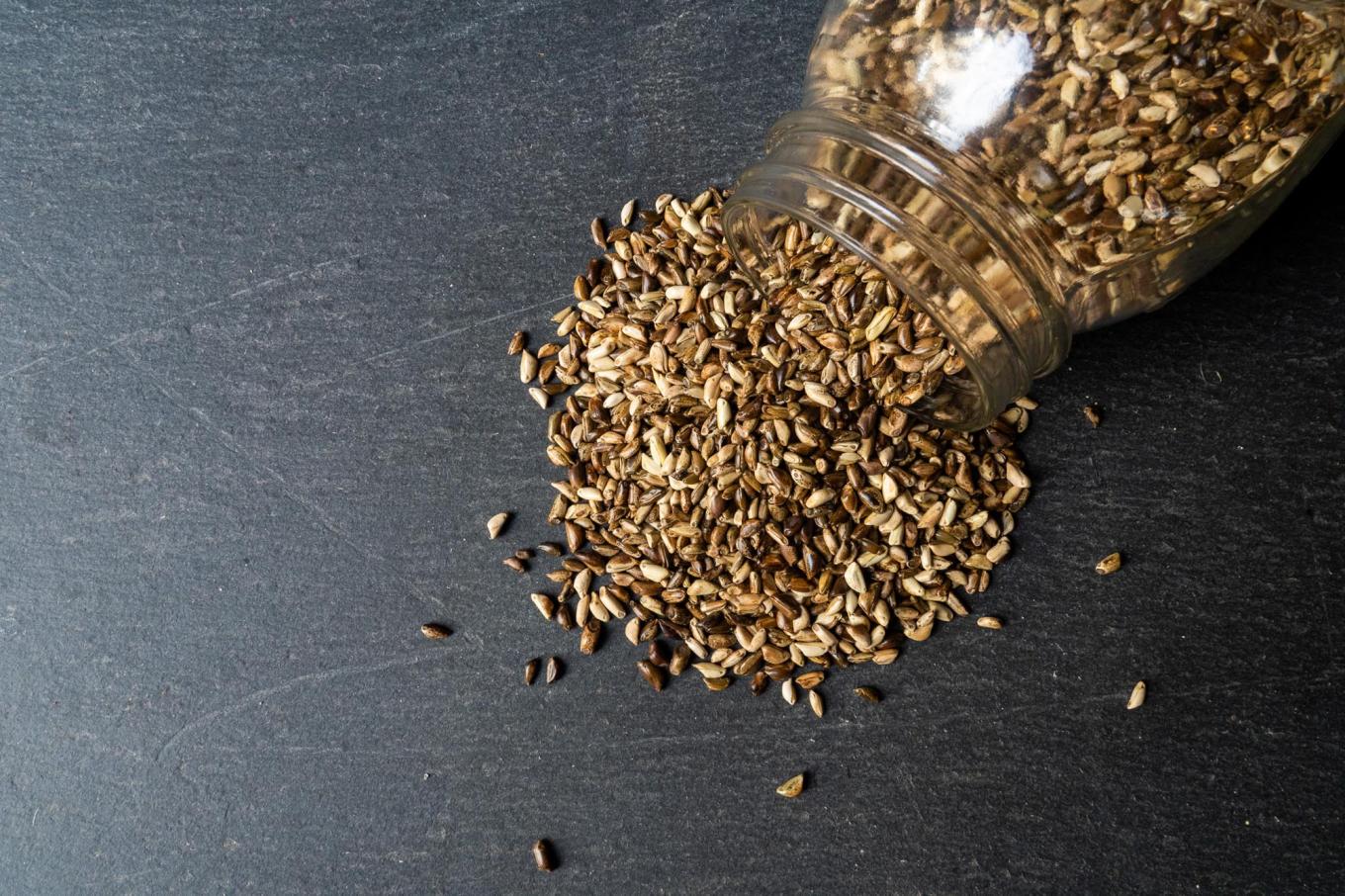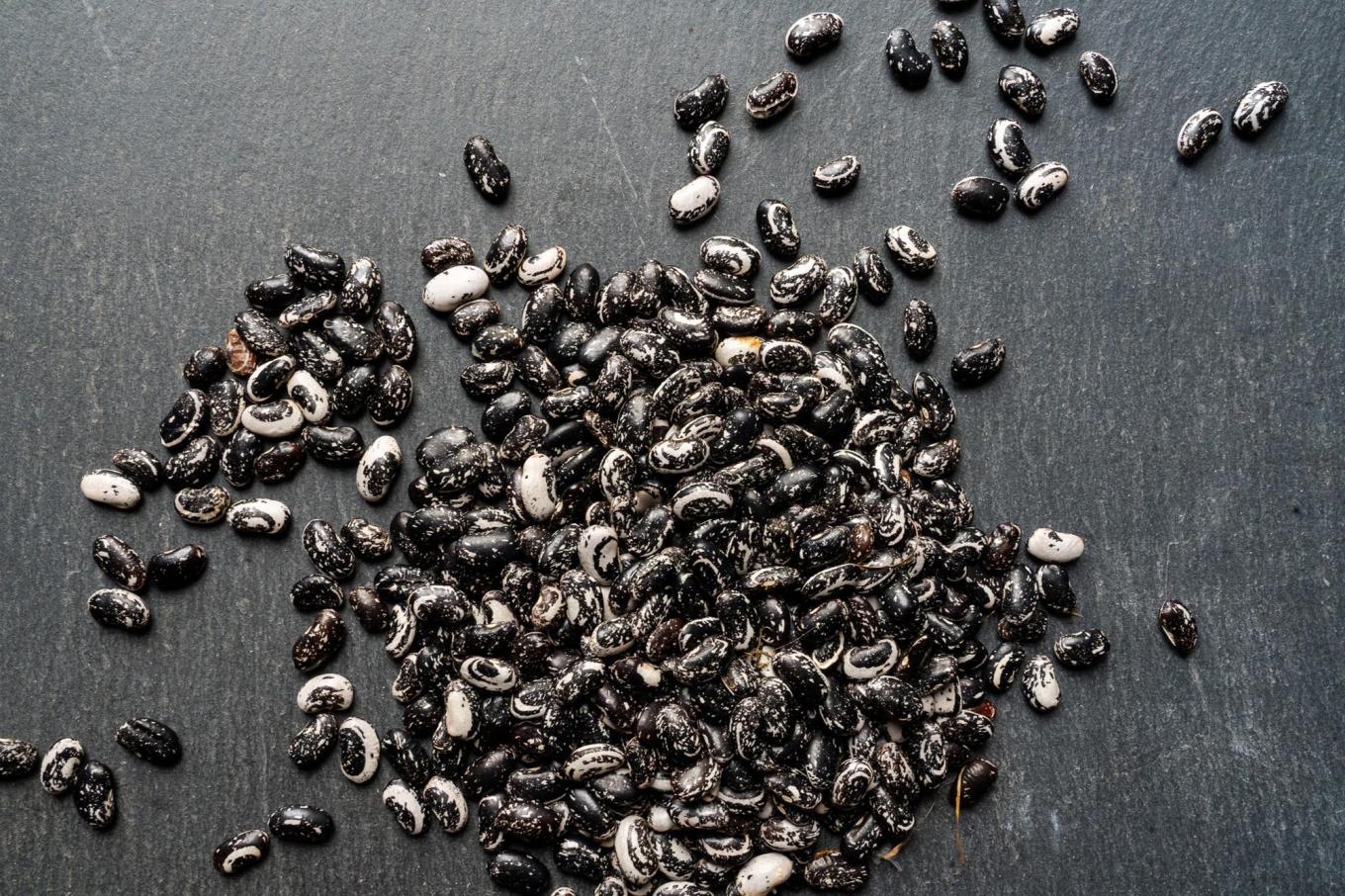
The Mad Agriculture Journal
Seeds of Change
Published on
January 11, 2024
Written by
ELENA TERRY
Photos
Jonnah Perkins
As I reflect on this year’s growing season, it is heartwarming to see the bountiful harvest, to see the successful gardens on social media and the pride from everyone who shares. Despite the extreme environmental challenges we face today, there are successful farmers, gardeners, and novice growers. In fact, there has been a beautiful emergence of young Native growers who are leading the next generation of farmers through use of Traditional Ecological Knowledge.
I am a mother, chef, seed keeper, advocate, educator, and member of the HoChunk Nation. Our tribal lands stretch throughout the state of Wisconsin. I founded the nonprofit Wild Bearies in 2019 to bring my work under a unified organization. Wild Bearies is an educational, community outreach nonprofit that strives to bring ancestral foods to communities in a nurturing and nourishing way. With goals of building stronger tribal communities through ancestral foods, we are also a culinary mentorship program. We work with our ingredients from seed to table, while promoting traditional food systems and restorative farming techniques.
To truly understand what that means, let’s take a journey back in time. Beginning with creation stories, as First Nations or Native Peoples, we have walked as stewards of a land that we call Mother Earth. It seems elementary to say it like that, but it’s not. As a mother, our home provides and cares for us. She nurtures and heals us, she gives life, changes as our seasonal cycles, she’s beautiful and mysterious and sometimes terrifying. We believed that from her (Mother Earth), we were given everything we needed to thrive in our environment. And thrive we did. As Indigenous people, we lived very harmoniously in our regions; for thousands of years.

These regions were connected through a very ignited and vibrant network of trade routes throughout the Americas. The critical part here was that resources were shared and traded but the knowledge that was essential for proper use of the resources was also shared. It wasn’t extracted aggressively or stolen, but there was a reciprocal relationship. Time was spent developing relationships with each other. These intergenerational exchanges were highly respected and built on trust and reciprocity. The care and attention that we put into our food sources, put into building our interpersonal relationships with our friends and family, has given us the privilege of still having some of those beautiful resources today.
What are some of those resources, you may ask? Well, one of them is the beautiful and diverse corn. Her very existence in our region exemplifies that there was a reciprocal trade relationship across the Americas. From her first journey to the United States and Canada, corn has planted her strong roots at every stop. In fact, she shows up for ceremonies in our communities, as a staple for meals, has characteristics that change based on the style of preservation, and is one of the most versatile ingredients I’ve ever used. However, our beautiful corn is in danger now.
Fearing cross pollination, threats of genetic testing and modifications; she’s in danger from drought, floods, extreme heat, and varied growing seasons. Celina Hall, Wild Bearie and Environmental Science Specialist said, “I hope to see agriculture in a less commercial way. We should break the normalization of monocropping and shift our perspective. We need to look at seeds as a gift from others and give them that respect. We should see these seeds as ancestors”.

When we take a minute to stop and look at the long term effects of our agricultural practices, it’s alarming. There is no denying that climate change is happening, that we are killing our freshwater supplies and clearly not thinking about what future generations will have for food, for an ecosystem, or what their weather patterns will be. When asked, Hall said, “My hope for the future is to see intercropping within growing seasons, while reconnecting with plants and animal relatives. We should see agriculture as a way to learn to live with the land again and learn from the plant relatives”.
It’s a beautiful philosophy that isn’t exclusive. In fact, these principles are ancestral and honored throughout Native communities. Hall’s work is a beautiful example of the continued living practice. She stated, “It’s ok to not know. The beauty is in learning and in the uniqueness of this work. It’s all part of the journey.” When asked about what her dream for her grandchildren is she replied, “That they will have access to healthy and natural food without preservatives or GMO. I want children to understand where food comes from, including animals and plants that give their lives for us. I want them to know how to honor those sacrifices.” The testament was an eye opening moment. Realizing the more we recognize the need for a shift in living practices and acknowledge the reclaiming actions happening, the more change we’ll be able to see for future generations.
That’s what it really needs to be about: our future generations. It can’t be a practice or change limited to Native communities. We all need to make the changes necessary to sustain our food systems in a healthy and restorative way. Zoe Lea, my daughter and Founding Board Member and Environmental Educator for Wild Bearies stated, “When I look at the impact that monocropping corn has had on our traditional corn relatives, it is disheartening. Our relative has been with us for generations, providing all of the love, nourishment and guidance that we need(ed). Yet, in recent years, this genetic adaptation to her, has caused harm upon her and our communities. To see our relatives going through so much pain, it hurts. But there are things we can do, we can change our thinking, we can change the mainstream agriculture practices, we can revitalize our relatives.’’ We need to stop and think about the long term impact of intentionality in this moment and realize that we are the ones who will need to make the permanent changes. To acknowledge that in this moment, we are the seeds that will change the future.

When speaking with Wild Bearies’ Conservation Specialist, Rita Peters, she emphasized the importance in her life of: “Discovering old knowledge, hearing ancestral teachings and recognizing the permanent longing to have those practices back in our lives that’s inherently in us. I’ve been drawn to the teaching, practice, and community that comes from being around our traditional foods for a long time.” When asked about what she hoped for the future of agriculture, Peters said, “I’d love to see us not so disconnected from our day to day lives. When we had villages and lived traditionally, we celebrated individual strengths. I would love to see cooperative growing spaces where we live because we never used to live so far away from where our food was sourced. That gave us the spiritual connection to the spaces and because of that we cared for it differently.”
The practice of growing in traditional ways was meant to be very spiritual. We interacted with our foods in a different way. We honored and respected the spaces the food grew in and worked as a community to care for those foods. The hard truth is recognizing it wasn’t ever our decision to change those practices. In fact, for several hundred years, we’ve been working to restore those teachings and expand living practices. As a collective population of Indigenous peoples, we have been working to restore the intergenerational connectedness we have with our food. In fact, the only reason our traditional seed savers in our community now have those seeds are because of the intentions of our ancestors. They don’t belong to one person, they have a purpose in life to provide for our people. They have their own journeys and history of resilience that is incredible and unique to each strain and species.
Let’s take a look at a corn seed. For my tribe, HoChunk Nation, we’ve had families steward different varieties of corn for centuries. She’s such a beautiful contribution to our ceremonies, she’s grown for our people and has continuously shown up in our traditional ceremonies for as long as she’s been in our community. Yet she didn’t originate here. She was brought to us from our Indigenous friends from the South. Archeologists have dated the first evidence of maize in the Southwestern United States about 4,000 years ago. It is thought to have reached the Northeastern United States about 2,100 years ago. As Zoe said, “Our family to the South entrusted us with this relationship. They taught us everything that we needed to know to care for our plant relative, to ensure her safety and protection. That relationship has hit a point where it is damaged, caused by forces outside of our control. But what if those forces were changed?”

Recognizing that there was an intergenerational transformation from her beginnings as teocente to where she is at now, corn has been manipulated and transformed to a state of cultivation that has become detrimental to our ecosystem. When you think of a seed as a living being, you don’t want to genetically change her, you wouldn’t want to conduct research on her or mass produce her. You develop a compassionate mindset for seeds like ancestral corn. You want to protect her, grow her in beautiful spaces, and recognize that her journey is intertwined with yours as history took a toll on both. Looking at the historical trade routes, you can see that there were great journeys where corn traveled and was shared with the Northern (North American) communities. Realizing the value of such a beautiful resource, our communities began integrating corn into ceremonies, honoring her for thousands of years with harvest celebrations, and beautiful feasts.
Recognizing the need for a more responsible and sustainable space for growth when it comes to our food systems is the first step. Investing in the future while building a long term Infrastructure is a good beginning. Realizing that we are the seeds of change, that it all starts with us in this moment and the permanent changes we make will help support the food systems for the next generations, is what will help shape the future of agriculture.

